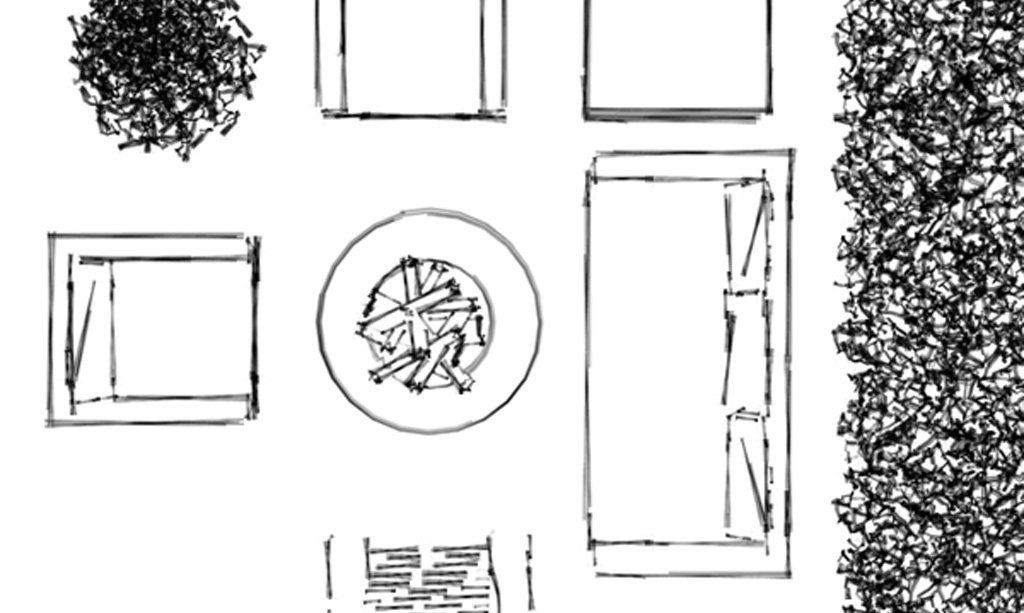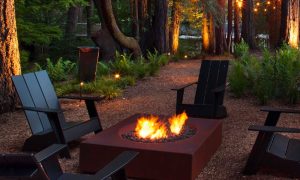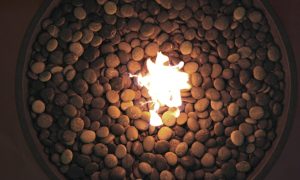Part 2 of my comparison of fire pits and outdoor fireplaces as design features deals with design considerations.
Both fire pits and outdoor fireplaces can add incredible ambiance and coziness to outdoor rooms, but each has its own unique personality and creates a very different feel. Here are some points to consider before installing one of these space-transforming features.
When it comes to the spatial design of outdoor rooms, fire pits and fireplaces define spaces in very different ways.
Fire pits create spatial hubs, with furnishings radiating out from the central fire. Like campfires, they encourage gathering and occupy the middle of social space. Whether positioned at ground level like a traditional fire pit, or at coffee table height, firepit conversations happen across the fire, and as the sun sets, this allows for total aesthetic immersion in the mesmerizing flames.
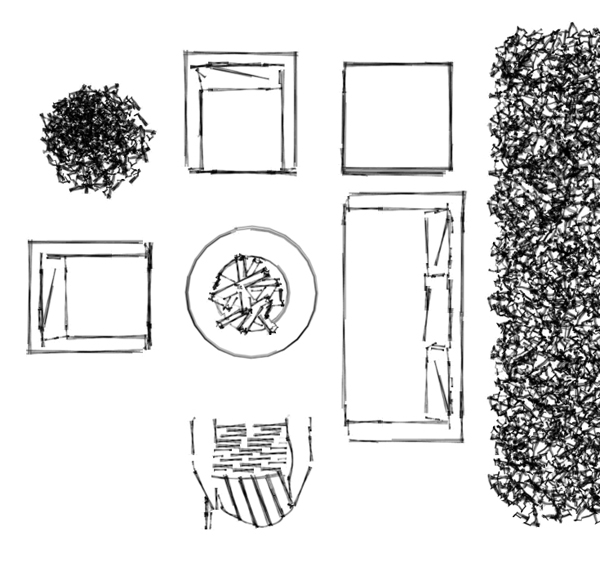
Outdoor fireplaces act much as they do indoors – as walls – and they can be used either on the perimeter of a space or as dividers. Their warmth and ambiance are projected outwards in a planar fashion, one hundred and eighty degrees from their faces. As such furniture is positioned much like it would be in a living room, with the fireplace defining the central axis of the space, or in a semi-circular fashion, with the fireplace at the center. Whether wood-burning or gas, outdoor fireplaces require some sort of vertical structure to accommodate the firebox, so they will always be wall or pillar-like and this verticality can be utilized to define an area and create a sense of enclosure, which lends itself to coziness. Outdoor fireplaces can effectively frame dining areas, as they can be positioned ‘off to the side.’
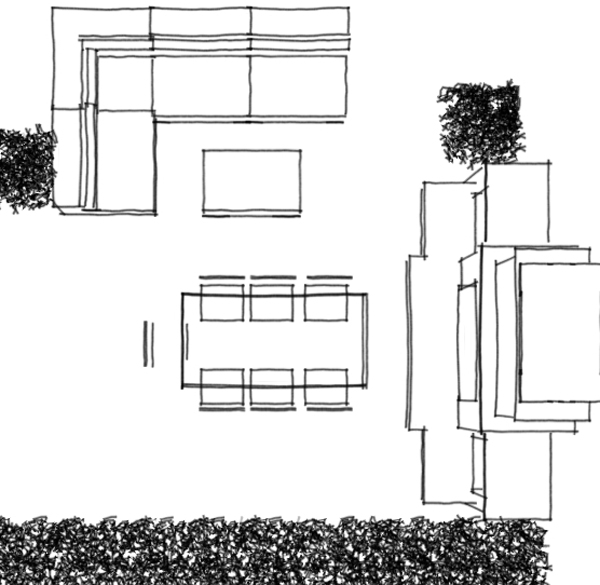
When designing the actual features, fire pits and fireplaces are very different, but benefit equally from following some shared guidelines.
Natural is good. The fire should be considered a design material and, as such, should be used in ways that are ‘appropriate.’ With fire pits and fireplaces, two general approaches usually lead to successful and impactful fire features: traditional and modern. When I use these terms, I am not so much referring to stylistic choices as I am to construction methods.
By traditional, I mean one should build a fire pit or fireplace like one would have before the advent of gas burners. With a fire pit, build it like a campfire: low to the ground, encircled with stone or brick. Or, more literally, a fire in a pit. With a fireplace, build it with the massing that a traditional masonry firebox would have – with a chimney – and use natural materials. Proper massing and tectonics will set the stage for more stylistic elements like a mantel and hearth.
A modern-designed fire pit or outdoor fireplace may eschew traditional configurations, but it is still important to respect fire as a design material. A modern fire pit may be contained in a sleek vessel or rise from a geometric slab, but as fire has a distinctly wild and natural feel, it is not served by pairing it with overtly manufactured materials. Modern fire pits are also a good example of “just because you can, doesn’t mean you should.” Although fire has magical qualities, too much ‘magic’ or impossibility in design may be novel, but ultimately, not very nice.
With modern outdoor fireplaces, massing is even more critical than with traditional styles. Although modern fireplaces may utilize unconventional formats, there is a direct correlation between the size and shape of the flame and the weight and feel of the structure containing it. And as with modern fire pits, it is vital to design the fire so it ‘makes sense.’













